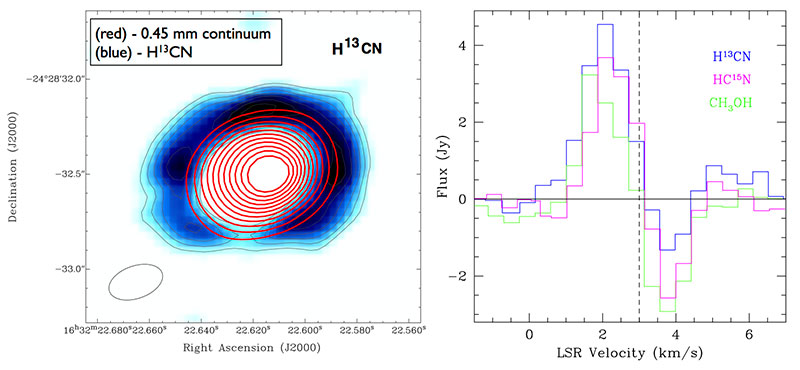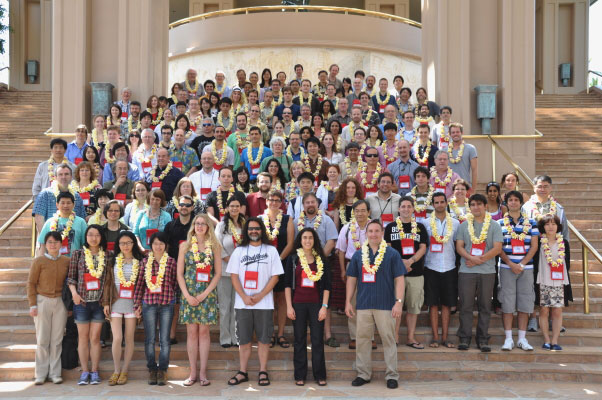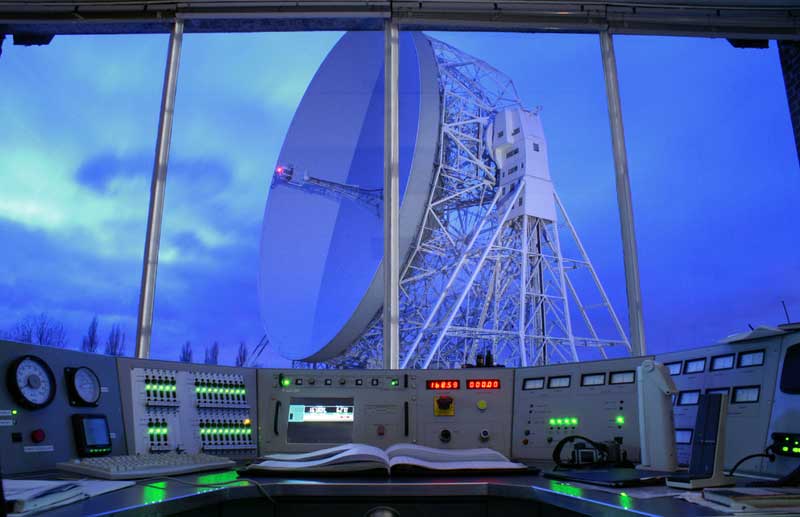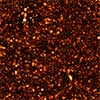NRAO eNews
Volume 6, Issue 5
May 1, 2013
NRAO eNews
Volume 6, Issue 5 • May 1, 2013
Upcoming Events
![]() Radio Astronomy in the LSST Era
Radio Astronomy in the LSST Era
May 6 - 8, 2013 | Charlottesville, VA
![]() The Second China-US Workshop on Radio Astronomy Science and Technology
The Second China-US Workshop on Radio Astronomy Science and Technology
May 13 - 17, 2013 | Shanghai Astronomical Observatory
![]() ALMA Band 2 Science Workshop
ALMA Band 2 Science Workshop
May 29 - 30, 2013 | Charlottesville, VA
![]() The Galactic Gas Supply Workshop
The Galactic Gas Supply Workshop
May 29 - 31, 2013 | Green Bank, WV
![]() The Atacama Large Millimeter/submillimeter Array: A New Window on the Universe
The Atacama Large Millimeter/submillimeter Array: A New Window on the Universe
Jun 4, 2013 @ 11:40am EDT | Indianapolis, IN
![]() Proposal & Observing Preparation with NRAO Telescopes
Proposal & Observing Preparation with NRAO Telescopes
Jun 4, 2013 @ 12:30 - 3:30pm EDT | Indianapolis, IN
![]() NAIC-NRAO Single-Dish School
NAIC-NRAO Single-Dish School
Jul 10 - 17, 2013 | Arecibo Observatory, Puerto Rico
![]() CASPER 2013 Annual Meeting
CASPER 2013 Annual Meeting
Sep 02 - 06, 2013 | Jodrell Bank Observatory, UK
![]() The Galactic Center: Feeding and Feedback in a Normal Galactic Nucleus
The Galactic Center: Feeding and Feedback in a Normal Galactic Nucleus
Sep 30 - Oct 04, 2013 | Santa Fe, NM
Proposal & Observing Prep with NRAO Telescopes
Anthony Remijan
AAS-Indianapolis Splinter Session
4 June 2013, 12:30-3:30 pm
Room 107, Indiana Convention Center
NRAO will host a Splinter Session at the summer American Astronomical Society meeting in Indianapolis to assist users with proposal preparation for the next Call for Proposals for all NRAO facilities, including the Green Bank Telescope (GBT), Jansky Very Large Array (VLA), Very Long Baseline Array (VLBA), and the Atacama Large Millimeter/submillimeter Array (ALMA).

This Splinter Session will be held on Tuesday, 4 June 2013, from 12:30 - 3:30 p.m., directly after the AAS Plenary Session presentation on ALMA by NRAO Director Tony Beasley.
This Session will guide new users in how to create proposals for each of the NRAO telescopes and will include brief overviews of new capabilities these telescopes are bringing to the scientific community. The Session will also include interactive walk-throughs of the proposal preparation tools for each facility, and guided, hands-on tutorials hosted by NRAO scientific staff.
No previous experience is necessary to attend and benefit from the Session, and we strongly encourage new and potential users to attend. Questions, comments, or suggestions on this Splinter Session should be directed to Anthony Remijan, Division Head of Scientific User Support Services.
ALMA Project News
Al Wootten

Credit: ALMA (ESO/NAOJ/NRAO), O. Dessibourg
As announced earlier via the ALMA Science Portal, ALMA will spend the next few months giving priority to commissioning and improvements to infrastructure and overall system stability. During this time, Early Science observing will proceed at a lower priority. As a consequence, the ALMA Cycle 1 observing period will be extended from the originally announced end of 31 October 2013 until at least the end of January 2014. The timescale for ALMA Cycle 2 will be announced in the near future.
There are, once again, 55 antennas at the 5000m elevation Array Operations Site (AOS). Both the AOS and the Operations Support Facility (OSF) are powered by a selection of the three propane turbines located at the OSF. This represents a substantial cost savings over the diesel-fueled generators that ran the antennas at the AOS until 8 April, when the changeover occurred. The new power system allows antennas to be placed on stations with longer baselines, and at present the antennas are deployed in a configuration resembling C32-3, except that six antennas are on baselines of about a kilometer or longer. This is the first time an ALMA subarray with such long baselines has been available. It will be used to commission techniques necessary for excellent imaging on those baselines, including band-to-band phase transfer and fast switching.
In early April, the first of the ALMA nutators underwent an acceptance review. Ultimately the total power antennas on the Atacama Compact Array will be outfitted with nutators to improve stability.
This Month @ the NAASC
Call for ALMA Development Studies
Al Wootten
ALMA Early Science results have been pouring out, and more than 30 papers have now been published on a wide range of topics. Installation and commissioning of the final receiver bands funded for construction has begun. In commissioning and Early Science, ALMA has operated at wavelengths from 3mm to 0.3mm across a decade of nearly complete frequency access as enabled by its broad bandwidth receivers, powerful correlators, and spectacular site. Having invested ~$1.3B to realize the biggest historical advance in ground-based astronomy, it is vital to maintain and expand its capabilities.
The ALMA Operations Plan envisages an ongoing international program of development and upgrades that may include hardware, software, or data analysis tools. With a modest investment, ALMA will continue to lead astronomical research through the 2011-2020 decade and beyond. The North American (NA) part of the ALMA project is currently involved in three ALMA development projects: (1) a partnership with Europe to build the first post-construction receiver band (Band 5); (2) part of an international partnership to add phasing capability to ALMA; and (3) an effort to improve internet bandwidth to the ALMA site. Additionally, eight development studies are underway in response to a NA Call issued in November 2011. A total of 21 submissions involving 77 investigators from 26 institutions were received and reviewed by an external panel. The funded studies, which are nearing completion, were on topics ranging from new receiver design to data analysis and visualization software.
A new Call for Development Studies is being issued 1 May 2013. To support this new Call, an informational workshop was held on Thursday, 18 April, at NRAO headquarters in Charlottesville, VA. An overview of the current ALMA Development Plan and studies now under way was given and presentations are available on line.
The primary aims of these studies are to:
- give groups in North America the opportunity to propose ALMA upgrades that may later be implemented as part of the ALMA Development Plan;
- support the development of conceptual and detailed designs for ALMA upgrades; and
- encourage relevant long-term research and development in areas important for ALMA.
The completed studies will be used, together with similar studies from the other ALMA partners, to augment and implement the ALMA Development Plan.
A Call for Development Projects will be issued 3 June 2013 and will be announced in the June NRAO eNews.
The release date for the FY2014 Call for Study Proposals is 1 May 2013. The period of performance for funded Studies will run from the award date (30 August 2013) to no later than 30 September 2014 (approximately one year). Proposers are requested to submit a Notice of Intent by 17 May 2013. The closing date is 12 July 2013. Proposals received after the closing date may be rejected, at NRAO’s sole discretion. Further details are can be found in the Conditions Governing the Call for Study Proposals (available via the Proposal Documents table at the ALMA Development webpage for this Call.
A total of $1.0M USD is available for funding Studies during the FY 2014 Development Program cycle (subject to the FY 2013 Federal Budget and allocation of funds). As a guideline, the NRAO expects to fund several Studies. No individual Study will be funded in excess $200,000 USD.
An informational meeting will be held in Charlottesville, Virginia on 10 May 2013. Interested parties may attend via telecon, videocon, or in person, and are requested to communicate their intention to participate, preferably by close of business on 6 May 2013, to the North American ALMA Science Center via e-mail to almainfo@nrao.edu.
These Calls are intended to attract proposals for innovative ideas that address current and future scientific opportunities with ALMA. All interested parties located within the North American ALMA partnership are eligible to participate in these studies.
ALMA Band 2 Science Workshop
Al Wootten
A workshop to develop the science case for development and construction of a receiver for ALMA Band 2 (65-90 GHz) will be held in Charlottesville, Virginia on 29-30 May 2013.
The aim of the workshop is to
- assess the science which a Band 2 receiver on ALMA would enable;
- identify a number of highest priority science cases;
- compare the existing ALMA technical specifications and requirements against the science; and
- determine the technological readiness for instrumentation on ALMA.
This workshop is part of an NRAO-funded ALMA development study to examine the scientific drivers for ALMA Band 2, and to develop a technical plan for the construction of those receivers. The workshop will be available via video connection or local participation. Further information is available at the workshop webpage.
The 4mm wavelength region (65- 90 GHz) that is also ALMA Band 2 is a virtually unexplored region of the electromagnetic spectrum. Until the very recent addition of a 4mm receiver to the Green Bank Telescope, the only facility with an operational receiver in this frequency region was the 12m telescope at Kitt Peak operated by the Arizona Radio Observatory (ARO). Furthermore, unlike the 7mm (31-45 GHz) band, which is covered by the newly upgraded NRAO Jansky Very Large Array, there are no radio interferometers operating in the Band 2 region. However, in contrast to this lack of operational astronomical receivers, the expertise to construct and implement a sensitive and stable receiver in this frequency range exists. A nearly quantum-limited Band 2 receiver can be built for ALMA with very little technology development.
The fundamental, J = 1-0 transitions of the deuterium analogs of common, abundant interstellar molecules are unique to this band, including DCO+, DCN, and N2D+. Studies of such species are crucial to our understanding of the evolution of cores in molecular clouds, and hence to star formation. Because such cores are often quite cold (T ~ 10 K), the J = 1-0 lines of these molecules that lie in Band 2 are by far the most sensitive probes. Furthermore, observations of such deuterated species are critical in evaluating chemical fractionation in interstellar material, and elucidating the pathways for ion-molecule chemistry. The larger primary beam size in Band 2 – 83 arcsec and 140 arcsec for 12m and 7m antennas, respectively, at 73 GHz – is well suited for imaging single cores with a single pointing, or whole molecular clouds with mosaicking.
Band 2 also contains the fundamental transitions of H2CO and HCNH+, among other molecules. H2CO is an excellent tracer of galactic structure and an important pre-biotic molecule. HCNH+ is a cornerstone species in ion-molecule chemistry, and the precursor to both HCN and HNC. Further observations of both molecules would be insightful for astrochemistry, astrobiology, and the structure of molecular clouds. In addition, redshifted CO and HCN emission, critical to understanding galaxy evolution, fall in the 4mm window. These examples highlight what is currently known; as with most unexplored wavelength regions, new scientific discoveries will likely occur, provided a receiver/detector is available with sufficient sensitivity. In Band 2, the transparency of the atmosphere and maturity of the required hardware virtually guarantee high sensitivity observations.
Infall in a Highly Optically Thick Protostellar Disk

ALMA is proving to be a powerful instrument in the assessment of gas dynamics in young protostellar disks. In a recent paper, Luis Zapata (UNAM) et al. present 0.2 arcsec ALMA observations of sub-millimeter continuum and line emission from a disk around the low mass, young star IRAS 16293-2422B. The 0.45mm continuum emission is observed to be compact, with a spatial extent of 50 AU (~ 0.4 arcsec). Surrounding the continuum emission is a molecular ring, as traced by H13CN, HC15N and CH3OH. The ring-like structure of the gas and the lack of substructure in the continuum emission are indications that the central regions of the disk are optically thick at these wavelengths. The emission lines of H13CN, HC15N and CH3OH show an inverse P-Cygni profile indicative of infall; these observations are consistent with lower resolution, lower frequency observations of infall by Submillimeter Array and ALMA. The estimated inflow rate of 0.6 km/s is higher than that estimated from the lower frequency observations, indicating that these new observations are detecting gas associated with faster and more turbulent regions closer to the star.
Reference: Luis A. Zapata (UNAM), Laurent Loinard (UNAM, MPIfR), Luis F. Rodriguez (UNAM, King Abdulaziz Univ), Vicente Hernández-Hernández (UNAM), Satoko Takahashi (ASIAA), Alfonso Trejo (ASIAA), and Bérengère Pariseet (MPIfR), 2013, ApJL 764, 14.
NAASC Science Workshop Report: Rocks 2013!
Al Wootten and Anthony Remijan


From 8-12 April 2013, the NRAO North American ALMA Science Center (NAASC) held its 7th annual science workshop titled Transformational Science with ALMA: From Dust to Rocks to Planets - Formation and Evolution of Planetary Systems. More than 150 participants converged on the Big Island of Hawaii to discuss and review a myriad of science topics regarding the formation of planetary systems as observed with the Atacama Large Millimeter/submillimeter Array, including 25+ student researchers and many other early career scientists.
A broad range of exciting new science was discussed at the meeting including:
- Improved resolution and sensitivity are unveiling subtle spatial and kinematic asymmetries in disks.
- Disk asymmetry can indicate vorticity in disks, which was proposed as a mechanism to produce dust trapping, which may lead to planet formation.
- Gaps or spiral structures in disks can be a hallmark of planetary sculpting.
- Chemical asymmetries provide clues to physical conditions; the conditions in the planet-forming midplane are of particular interest.
- Deuteration may provide a signpost for the ‘snow line’ in disks, the regions where molecules may freeze onto grains, providing the building blocks for giant planets and a repository for molecules important to the development of life.
- Subtle kinematic shifts may evidence material flow between inner and outer disk regions capable of shifting material from the snow line and potentially providing atmospheres and oceans for rocky inner planets.
- The newly available sensitivity and resolution are yielding breakthroughs in our understanding of the kinematics, chemistry, composition, structure, and evolution of a range of environments including molecular clouds, protoplanetary disks, debris disks, young planetary systems, and the youngest protostars.
All presentations will soon be available at the 2013 Rocks! website.
CASPER 2013 Annual Meeting
Ben Stappers (University of Manchester)

The 2013 Collaboration for Astronomy Signal Processing and Electronics Research (CASPER) Annual Meeting will be held 2-6 September 2013 at Jodrell Bank Observatory, the radio astronomy facility of the University of Manchester, and at the Discovery Centre, Cheshire in the United Kingdom.
Typically attended by about 100 international astronomy digital signal processing (DSP) experts, the annual meeting of the global collaboration traditionally includes a review of the past year's accomplishments, future plans for development of new instruments and tools, a review of the latest global trends, and hands-on training for old hands and new recruits alike. The mission of CASPER is to streamline, simplify, and thereby accelerate the design of astronomy instrumentation by promoting design reuse through the development of platform-independent, open-source hardware and software.
Historically, CASPER DSP hardware has been FPGA-based, but in the recent years, CASPER has explored other options also, such as GPU computing, fast multi-core CPUs, and heterogeneous computing that exploits the best of FPGAs and these new techniques. As a result, the annual CASPER workshops have become an excellent forum for fruitful exchange of ideas as well as for learning about the various techniques.
This year's CASPER workshop will be hosted by the Jodrell Bank Centre for Astrophysics at the University of Manchester and will be held at the Jodrell Bank Observatory, home of the Lovell and eMerlin telescopes, about 20 miles south of Manchester. We look forward to an enthusiastic participation from members and supporters of the CASPER community, including newcomers wishing to join.
Formal registration for the workshop is open. Visit the workshop website for more information.
Recent Press Releases

VLA Gives Deep, Detailed Image of Distant Universe
30 Apr 2013
Staring at a small patch of sky for more than 50 hours with the ultra-sensitive Karl G. Jansky Very Large Array (VLA), astronomers have for the first time identified discrete sources that account for nearly all the radio waves coming from distant galaxies. Read more…

Einstein's Gravity Theory Passes Toughest Test Yet
25 Apr 2013
A strange stellar pair nearly 7,000 light-years from Earth has provided physicists with a unique cosmic laboratory for studying the nature of gravity. Read more…

Massive Star Factory Churned in Universe's Youth
17 Apr 2013
Astronomers using a world-wide collection of telescopes have discovered the most prolific star factory in the Universe, surprisingly in a galaxy so distant that they see as it was when the Universe was only six percent of its current age. Read more…

ALMA Detects Signs of Star Formation Surprisingly Close to Galaxy's Supermassive Black Hole
4 Apr 2013
Astronomers using the Atacama Large Millimeter/submillimeter Array (ALMA) have discovered signs of star formation perilously close to the supermassive black hole at the center of the Milky Way Galaxy. Read More …
Career Opportunities
New Postings
Deputy Assistant Director: The NRAO in Charlottesville, Virginia is recruiting for a Deputy Assistant Director to manage the Software Division of the Observatory including programmatic, technical, and all personnel aspects. The incumbent will direct all line management software group managers at the NRAO, some of whom are also functionally/matrix managed to telescope operations or projects (matrix management). The Software Division is part of the Data Management and Software Department and includes all the groups developing software at various NRAO sites (Charlottesville, Virginia; Green Bank, West Virginia and Socorro, New Mexico).
Software Engineer II: The NRAO in Socorro, NM invites applications for a Software Engineer II. The successful candidate will participate in the development of user interfaces, working half of the time on the Observatory Operations Support Software (ObOps) group, based in Garching, Germany; and the other half of this time on the Control Software group, in Socorro, New Mexico. As this position is based in Socorro, the candidate will interact directly with the Control team, but will coordinate development activities remotely with the ObOps team. The candidate is expected to participate in all aspects of the software development effort.
CASA Software Test Engineer: The NRAO in Socorro, NM is seeking a Common Astronomy Software Applications (CASA) Software Test Engineer to work with CASA developers, project scientists, and stakeholders to design and implement a comprehensive test program. Duties will include assuming responsibility for existing test systems, improvement of existing test, and evaluation of test coverage for new capabilities.
Science Support and Archive (SSA) Software Group Lead: The NRAO in Socorro, NM is seeking a Science Support and Archive (SSA) Software Group Lead to manage the Science Support and Archive (SSA) software group. The SSA group is responsible for most NRAO software with which astronomers directly interact.
LO/IF Technician: The NRAO in Socorro, NM is recruiting for a LO/IF Technician. Under general supervision from scientists and engineers the LO/IF Technician devises, layouts, fabricates, calibrates, tests, analyzes, troubleshoots and/or repairs astronomical research related equipment such as: computers, electronics, electrical, cryogenics, and lasers.
ALMA Control System Developer: The NRAO in Socorro, NM is seeking an ALMA Control System Developer. The selected candidate for this position will participate in the development of new features across this architecture, as well as be responsible for maintaining the existing code, debugging problems and providing support for the telescope operations in Chile.
VLBA Station Electronics Technician: The NRAO in Socorro, NM is accepting applications for a VLBA Station Electronics Technician. The successful candidate will be responsible for repairs and maintenance at the Very Long Baseline Array (VLBA) Station, including the 25-meter antenna and support equipment. The technician must respond to emergency repair situations as dictated by the impact on the station's ability to perform intended functions.
STEM Education Development Officer-AUI: Associated Universities Inc. (AUI), in Washington, DC is recruiting for a STEM Education Development Officer. The incumbent will be based at the National Radio Astronomy Observatory (NRAO) in Charlottesville, VA and work closely with the NRAO Education and Public Outreach (EPO) team, under the supervision of the Assistant Director for EPO. The STEM Education Development Officer will identify and implement opportunities for AUI to contribute to the advancement of STEM (science, technology, engineering, and math) education via partnerships, grants, and the leveraging of existing NRAO and other AUI assets, which include a large staff of scientists and engineers and a talented, geographically dispersed EPO staff.
Sullivan Interviews Available On-line
Ellen Bouton
The NRAO Archives is pleased to announce the availability on the Web of transcripts of selected interviews conducted with radio astronomers between 1971 and 1988 by Woodruff T. Sullivan III. Sullivan's taped interviews with 255 radio astronomers were part of the research for his book, Cosmic Noise: A History of Early Radio Astronomy (Cambridge University Press, 2009), and were donated to the NRAO Archives in 2010.
Through the Finding Aid to Sullivan's papers, users may access links to the transcribed interviews, descriptions of all the interviews conducted, as well as descriptions of and links to other materials in Sullivan's papers. Contact Ellen Bouton for additional information.
The 2011 Pollock Award from Dudley Observatory funded the digitization of the analog tapes, and a 2012 grant from the American Institute of Physics, Center for the History of Physics, funded the Internet publication of transcribed interviews. We are grateful to both institutions for their help in making these unique and fascinating interviews available to researchers.
Grote Reber Inducted into National Inventors Hall of Fame
Ellen Bouton
The U.S. Department of Commerce's United States Patent and Trademark Office and the National Inventors Hall of Fame have announced that Grote Reber is among the 2013 inductees. The National Inventors Hall of Fame honors men and women whose innovations and entrepreneurial endeavors have changed society and improved the quality of life, having a major impact on public welfare and the progress of science and the useful arts.
Reber's citation reads:
Grote Reber (1911-2002) - Radio telescope - Reber, a pioneering radio astronomer, built the first substantial radio telescope dedicated to astronomy. Radio astronomy allows for the detection of objects and phenomena not possible with optical astronomy, utilizing a radio receiver than can amplify faint cosmic signals, making the waves strong enough to be recorded and charted.
He is also being honored for his 22 August 1950 patent on a radio sextant navigational instrument.
Reber's original antenna stands at the entrance to the NRAO Green Bank, WV facility. In 1995 Reber donated his papers to NRAO, and they are available in the NRAO Archives. Additional Reber materials and artifacts are at the Grote Reber Museum in Australia.
From the Archives
Ellen Bouton

About this month's photo: Grote Reber, inducted this month into the National Inventors Hall of Fame (see article above), was a frequent visitor to NRAO. In this photo from November 1985, Reber is at the controls of NRAO's 12 meter telescope on Kitt Peak. During his 1985 trip to the U.S. from his home in Tasmania, Reber also was inducted into the DuPage Heritage Gallery in Wheaton IL. Thanks to Harley Thronson, who took the original slide and provided a high resolution copy.
From the Archives is an ongoing series illustrating NRAO and US radio astronomy history via images selected from our collections of individuals' and institutional papers. If readers have images they believe would be of interest to the Archives, please contact Ellen Bouton.

